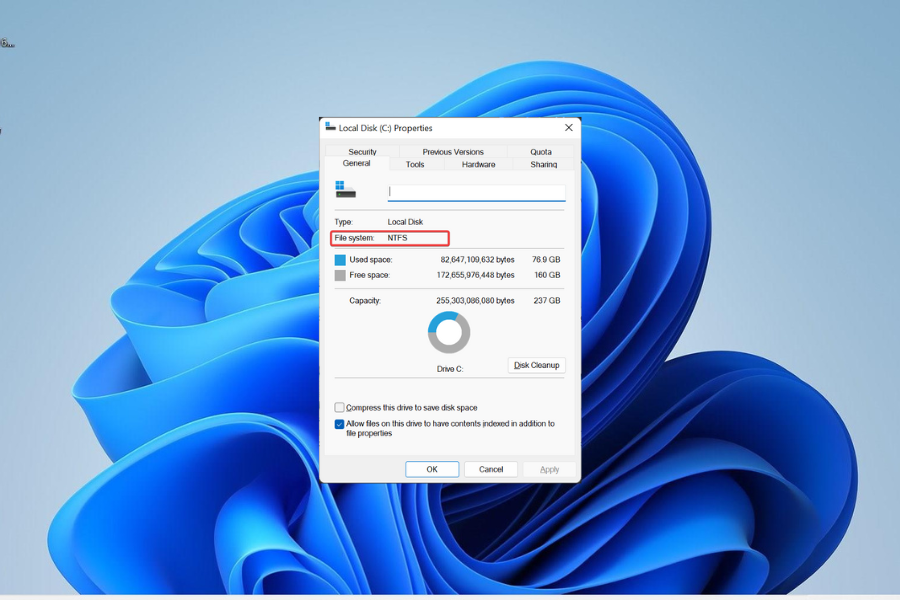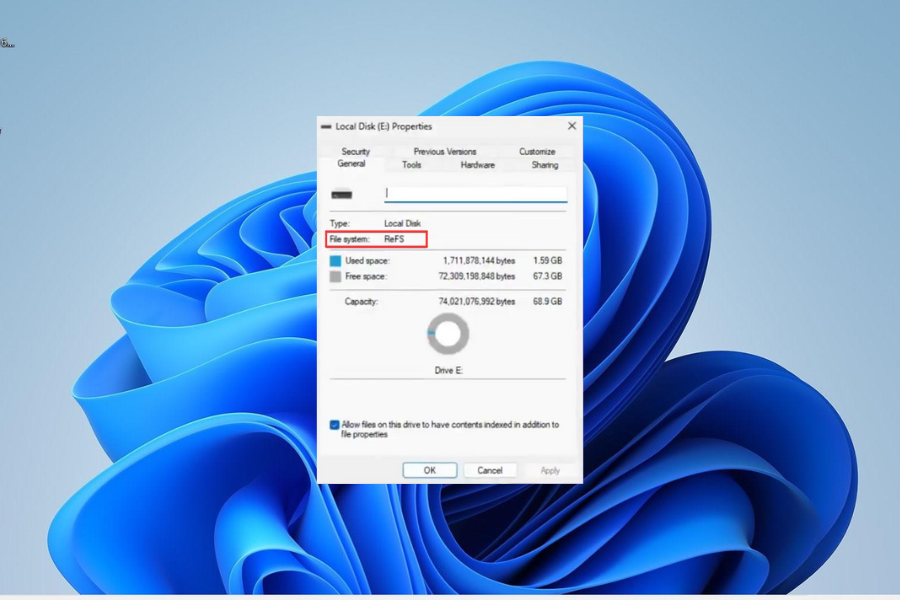Windows 11 NTFS vs. ReFS: Which One is Better & Why?
An in-depth comparison of two top file systems
4 min. read
Updated on
Read our disclosure page to find out how can you help Windows Report sustain the editorial team Read more
Key notes
- ReFS is the latest kid on the block regarding file systems, and it promises some goodies.
- While NTFS has been around for a long time, it still has numerous unique features over the latest file system.
- Regarding reliability, performance, and scalability, ReFS might be the better option.

NTFS has been the default file system of Windows PCs, but Microsoft is introducing something juicy in ReFS. This new file system might be coming to Windows 11, and users are eager to know what an NTFS vs ReFS comparison will look like.
In this detailed guide, we will show you the better option between these two file systems.
Does Windows 11 support ReFS?
The talks of Windows 11 supporting ReFS (Resilient File System) are still tentative and a work in progress. The file system is not yet officially available on Windows 11 PCs.
However, insiders in the Devs Channel and Windows Server now have access to the file system. Hopefully, it will be official sooner than later.
Does Windows 11 still use NTFS?
NTFS (New Technology File System)is still the default file system on Windows 11, just like it has been since Windows NT. It is still, without a doubt, one of the most popular file systems.
While there are talks of ReFS replacing NTFS, that might not be happening completely anytime soon. So, your Windows 11 PC will still use NTFS for some time.
Windows 11 NTFS vs ReFS: The comparison
1. Reliability
As expected for any file system employed on Windows PC, these two options are pretty reliable. However, being the latest invention, ReFS packs in some new data protection features.
At the top of this list is the ability to verify and repair file corruption by itself. Your files can sometimes get corrupted on NTFS due to sudden power termination.
In this case, you must run the CHKDSK command to repair the bad sectors. However, with ReFS, it does not need the command.
Instead, it repairs the files automatically, reducing the impact of bad sectors on your data. So, in this aspect of the Windows 11 NTFS vs ReFS, the latest file system edges it.
2. Scalability
With the age of NTFS, it is obvious that it was designed when large sets of data were not too prevalent. However, things have changed recently, and servers now handle very large data and need to do it with speed.
To clarify things, NTFS can handle a maximum file size of about 256 TB and volume size. ReFS, on the other hand, supports up to 35 PB (35000 TB)maximum file and volume size.
So regarding scalability in this Windows 11 NTFS vs ReFS comparison, ReFS comes up triumph.
3. Performance
This is another stronghold of ReFS. It is considerably faster than NTFS and boasts more speed acceleration features.
One of these features is Block cloning and Sparse VDL, which helps better performance on virtualized workloads on Windows Server. Another excellent feature is the ability to split the volume into logical tiers for performance and capacity.
With this feature, whenever you need to write data to your disk quickly, it will first go to the performance tier to perform the task faster before moving to the capacity tier.
Finally, to make this data acceleration obvious, the file system is better paired with SSD. So, it is not close in this section of our Windows 11 NTFS vs ReFS comparison.
4. Features
4.1. NTFS
Various excellent features make NTFS stand out. Among them is file system compression, which allows you to compress files at the file system level.
Another is file system encryption, with which you can encrypt your files. There is also the Offloaded Data Transfer feature that helps to speed up file copying and movement.
Below are some other NTFS features:
- Disk quotas
- Transactions
- Page file support
- Extended attributes
- Supported on removable media
- Bootable
4.2. ReFS
ReFS also has some features that are unique to it. A major one is the Block Clone which it uses to perform file copying as a low-cost metadata operation.
This helps to speed up file copying. There is also Sparse VDL and Mirror-Accelerated Parity, all working to make it considerably faster.
Lastly, some features are common to NTFS and ReFS. Some of them are BitLocker encryption, access-control lists, reparse points, failure cluster support, and data deduplication, among other features.
Hence, in this aspect of our Windows 11 NTFS vs ReFS comparison, the two file systems have more in common than differences.
Is ReFS better than NTFS?
While NTFS has served well and continues to deliver, this Windows 11 NTFS vs ReFS comparison shows that ReFS is considerably better. It triumphs in performance, reliability, and scalability, among other determining factors.
However, you will have to wait a bit longer before using it on your Windows 11 PC.
As an extra, if you are getting a Windows 11 file system error, check our detailed guide to fix it.
Feel free to let us know your experience with any or both of these file systems in the comments below.










